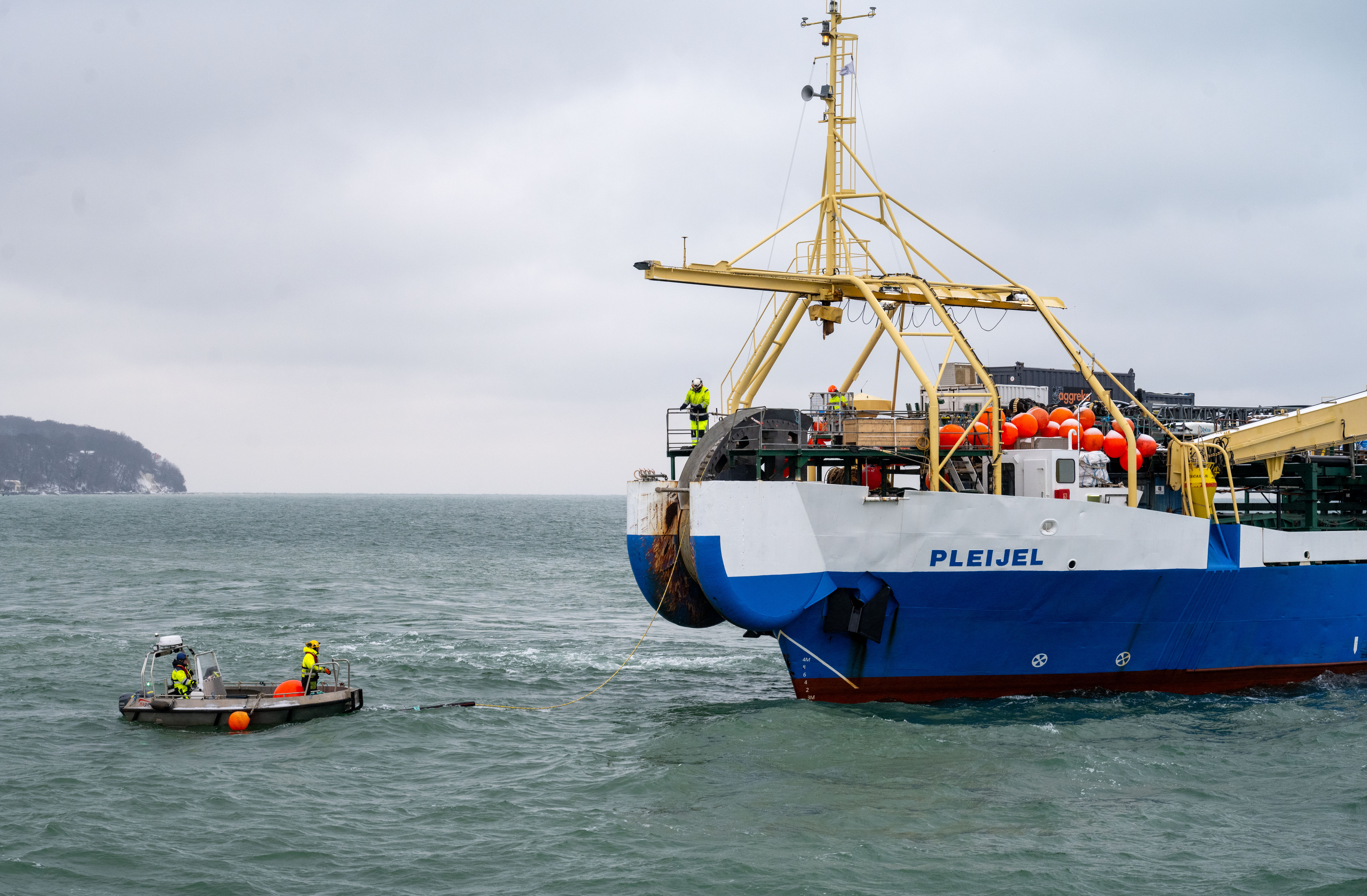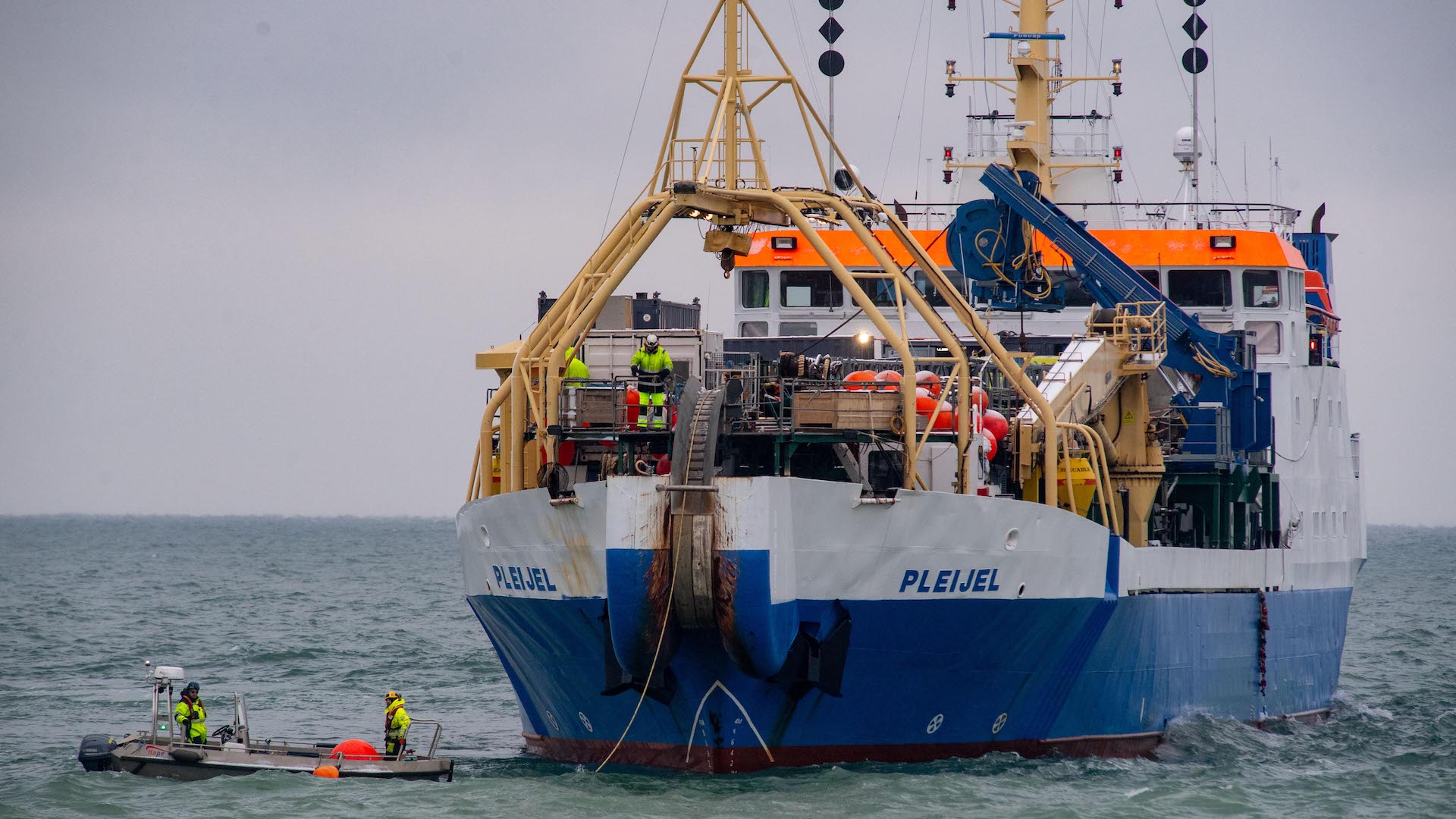Germany says that damage to two communication cables in the Baltic Sea was most likely the result of sabotage. The mysterious incidents, which began on Sunday, are the latest in a series in the region. They come as concerns grow over nefarious Russian activity in Europe, seemingly part of an apparent wave of ‘hybrid warfare’ as the conflict in Ukraine further stokes East-West tensions. Meanwhile, accounts of a Chinese vessel operating in the vicinity of the cables around the time they were damaged raises the possibility that this might have been involved, whether deliberately or otherwise.
The two cables in question are both fiber-optic communication cables, running along the Baltic seabed. One of these runs between the Swedish island of Gotland and Lithuania, and the other between Finland and Germany.

The first of these — some 135 miles long — appears to have been damaged at around 8:00 a.m. GMT on Sunday, according to the telecoms company Telia Lietuva. This led to an outage with internet communications.
The second cable is 746 miles long, running between Helsinki and the German port of Rostock. This was put out of action around 2:00 a.m. GMT on Monday, the Finnish cybersecurity and telecoms company Cinia said.

The incidents led to immediate speculation around potential hostile action, an idea that the German Minister of Defense Boris Pistorius today picked up on.

“No one believes that the cables were accidentally damaged,” Pistorius said. “I also don’t want to believe that the ships’ anchors caused the damage by accident.”
“We have to assume, without certain information, that the damage is caused by sabotage,” he added.
Pistorius hasn’t so far provided any specific evidence to back up this claim.
Meanwhile, the foreign ministers of Finland and Germany have offered more circumspect statements on the incidents, with a joint statement expressing their “deep concern” and confirmation that a “thorough investigation” is now underway. The Swedish Navy, too, confirmed today that a criminal investigation is underway in that country, with the Navy contributing ships that will pinpoint the locations of the damaged cables.
However, this is hardly the first time that there has been suspicious activity in the Baltic Sea, including suspected sabotage.
Most notoriously, there was a series of explosions along the Nord Stream gas pipelines in 2022. The cause of these is still being investigated by German authorities.

Outside of the Baltic, there have been other incidents of reported sabotage of critical communications cables, including one associated with Evenes Air Station, in northern Norway, which happened in April, but was only disclosed in August, as TWZ reported at the time. Norway has seen other suspicious incidents in the past, notably the cutting of a vital undersea cable connecting Svalbard to mainland Norway in 2022.
While the Baltic Sea has long been of strategic significance for both Russia and NATO and its allies, there has been a spike in incidents in these waters since Moscow launched its full-scale invasion of Ukraine in February 2022.
Against the backdrop of East-West tensions, suspected sabotage incidents in the Baltic have led to speculation that these may be Russian-inspired, or at least connected to this standoff.
“The fact that such an incident immediately raises suspicions of intentional damage speaks volumes about the volatility of our times,” said Finnish Foreign Minister Elina Valtonen and her German counterpart Annalena Baerbock in their joint statement.

“Our European security is not only under threat from Russia’s war of aggression against Ukraine but also from hybrid warfare by malicious actors. Safeguarding our shared critical infrastructure is vital to our security and the resilience of our societies.”
The foreign ministers stepped back from blaming Russia directly for the latest incidents, but, in a separate statement, Baerbock did draw attention to other reported Kremlin-inspired hostile activity in Europe in recent months.
Baerbock noted that Germany has been targeted by cyber-attacks, surveillance of critical infrastructure, and fires as the result of an incendiary device plot, which you can read more about here.
Other incidents in Germany this year alone have included an alert at Geilenkirchen Air Base after the German Ministry of Defense reported “intelligence information indicating a potential threat,” the arrest of two German-Russian nationals on suspicion of plotting sabotage attacks on U.S. military facilities in the country, as well as reports of unexplained drone activity, including over a major floating liquid natural gas (LNG) terminal.
“These can’t all just be coincidences,” the German foreign minister said.

In the meantime, NATO is stepping up its surveillance activities in the Baltic. In particular, the Latvian Navy has said it will increase its patrols in the areas where the cables were damaged.
More broadly, NATO’s Allied Maritime Command (MARCOM) says that it is aware of an increased threat to undersea infrastructure. “These attacks show how vulnerable such infrastructure can be. NATO is stepping up patrols near undersea infrastructure,” the command said.
In the recent past, MARCOM has also highlighted the specific risk that Russia poses to undersea infrastructure.
“We know the Russians have developed a lot of hybrid warfare under the sea to disrupt the European economy through cables, internet cables, pipelines. All of our economy under the sea is under threat,” MARCOM’s deputy commander Vice Adm. Didier Maleterre said earlier this year.
Previously, we’ve looked at how the Russian Navy has a variety of means at its disposal to conduct covert operations on the seabed. It’s widely assumed that Russia’s special mission submarines, deep-sea submersibles, and unmanned underwater vehicles can be used for both investigating and disrupting undersea cables. Certainly, cutting communications cables should be well within the capabilities of such craft.
There are also various Russian Navy surface vessels that are ideal for these kinds of activities. Prominent among them is the Yantar, described as an “oceanographic research vessel,” but frequently used for military purposes, with specialized equipment that can reportedly tap or cut submarine cables and investigate and retrieve objects from depths of up to 18,000 feet. Recently, the Yantar was escorted out of the Irish Sea after it entered Irish-controlled waters and patrolled an area containing critical energy and internet submarine pipelines and cables.

On the other hand, sabotage of undersea cables could likely also be achieved covertly even without using methods as high-tech as submarines and other underwater vehicles. In shallower water, divers would be able to operate, although they would still require some kind of support vessel, at least in the general vicinity.
The security situation in the Baltic is also having a direct effect on infrastructure plans. Most prominently, Sweden decided earlier this month not to build 13 new offshore wind farms, citing the security risks involved.
As for the most recent damage to the Baltic communication cables, there has been some speculation that a commercial vessel may have been responsible, by dragging its anchor along the seabed.
There would also appear to be a precedent for this.
Last year, a subsea gas pipeline and several telecoms cables off the coasts of Finland and Estonia were badly damaged in an incident that was initially suspected of being sabotage.
Ultimately, investigators determined that a Chinese container ship likely dragging its anchor had caused the damage.
While it’s unclear whether the damage in 2023 was accidental or intentional, it’s possible that the same thing might have happened again in the last few days.
Based on publicly available ship-tracking websites, it appears that another Chinese vessel, the Yi Peng 3, may have been in close proximity to both the communication cables around the time that damage was reported. Using the same data, it seems that the cargo ship also slowed down while passing over the cables.
The same Chinese vessel was later noted being shadowed by the Royal Danish Navy, before heading out of the Baltic.
So far, previous incidents involving apparent sabotage to Baltic Sea infrastructure have proven very difficult to pin on any one culprit, despite a spike in reports of Russian-inspired activity in this regard. However, the latest developments underscore the fact that undersea infrastructure is a major vulnerability, something that has been known for years, while the Baltic Sea’s strategic importance is magnified by the standoff between NATO and Russia.
Contact the author: thomas@thewarzone.com
